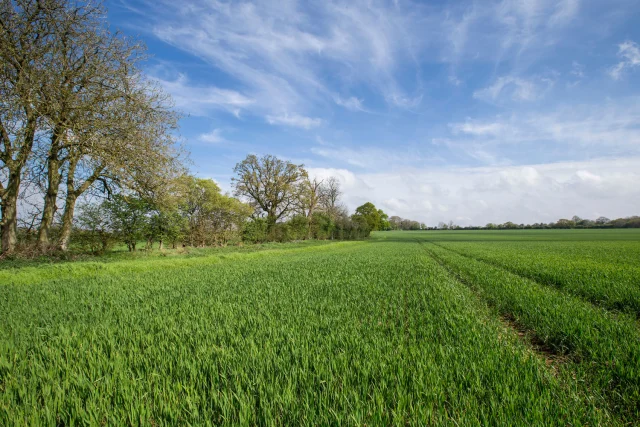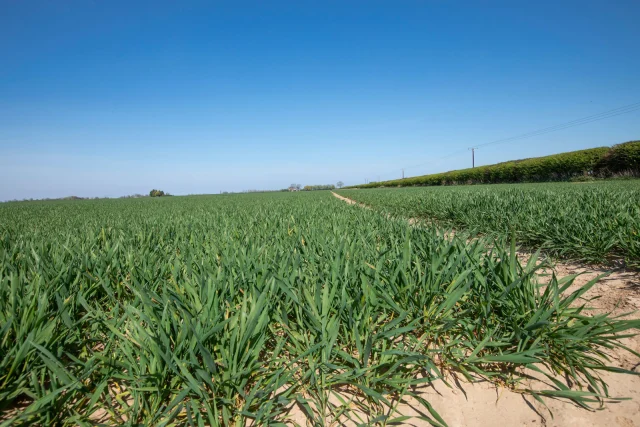Published on 2nd June 2020
Local Insights
West: 6 agronomy tasks for growers in the west this June and July

Gareth Bubb looks at six tasks growers in the west will be contemplating this June and July
West: 6 agronomy tasks for growers in the west this June and July Content
Crop Progress
After less than 5mm of rain in May following the dry April crops are all over the place in the west. The light land wheats, in particular, are dying on their feet and these, along with all crops, desperately need some rain soon. The last fungicides are being applied to spring barley crops – those that found moisture when drilled don’t look too bad despite the dry.
Gareth’s agronomy tips for June and July
1. Keep an eye on the weather forecast as you decide on T3 plans
As I write the forecast is for more unsettled weather with the possibility of some rain and cooler weather for the first weekend of June. Time will tell if that actually materialises, but as you approach ear sprays in wheat, keep an eye on the forecast as it should help inform what decisions you make.Remember the objective is to keep wheat crops as green as possible for as long as possible. Our research shows for every day you can keep the crop green at the end of the season you increase yield by up to 0.4t/ha/day, so even keeping the crop greener for a few days can make a big difference.If the wet weather does materialise then that could mean higher risk from Fusarium ear blights. Timing is important for this disease – you should be aiming for early to mid-flowering, when the anthers are emerging from the middle of the ear. Using Proline (prothioconazole) will give you a little more flexibility in timing and is the only active to give control of Microdochium nivale. It will also help protect against any Septoria and mildew bubbling up.
2. Look out for Hutton Criteria breaches in potato crops
Most potato crops have had their pre-emergence herbicides, which despite the dry weather seem to have worked well, so it’s now time to focus on blight strategies. Monitoring Hutton Criteria for blight risk will help support decision-making by highlighting when risk is higher. The Hutton Criteria have replaced the old Smith Period and occur when there are two consecutive days with a minimum temperature of 10C and at least six hours of 90% relative humidity. Infinito (propamocarb + fluopicolide) fits all the way through blight programmes, as it strong against both foliar and tuber blight, but most will keep some back for later in the season when there are fewer options for tuber blight control.
3. Don’t go too early with OSR desiccation
The YEN project has shown just like in wheat, the longer you can keep oilseed rape green the better the yield will be. It’s a big “if” but if crops have managed to avoid the worst of the cabbage stem flea beetle attacks and other problems, yields might actually be decent because of the high levels of sunshine during grain fill.But the worst thing you can do now is to spray off crops too early, as it will potentially terminate grain fill, while limiting oil percentage and increasing the risk of red seed at harvest.To determine timing, open up 20 pods from representative parts of the field, and look to see if two-thirds of the seeds have turned brown in at least 15 of the pods.If you’re going to use the crop for seed then don’t use Roundup (glyphosate).
4. Rogue wheat crops to make start on next year’s grassweed control
Where weeds have escaped control programmes it is worth noting species and levels to help adapt cultural control programmes before the next crop. If levels are rogueable then consider taking that step to prevent seed return, and if levels are higher then also think about whether it is worth spraying crops off.
5. Wait for active growth for weed control in maize
Remember ALS inhibitors, such as Maister (foramsulfuron + iodosulfuron) need weeds to be actively growing for best efficacy, so try to wait for that before applying. Some maize crops are also a bit stressed or suffering from damage by wind, and again it is best to avoid applying herbicides in that situation to minimise crop check. Maister has a latest application of GS16.
6. Consider signing up for a free one-year trial of Climate FieldView
We’ve had some excellent feedback from growers trialling our new digital platform Climate FieldView this spring, and there is still time to apply for a one year free trial of the system.While yields are unlikely to be record-beaters this season, Climate FieldView will be able to help you understand exactly which parts of fields have performed this season in real-time straight off the combine, and help you make better management decisions in future.
Local technical updates
See all of our latest agronomy advice from across the country



